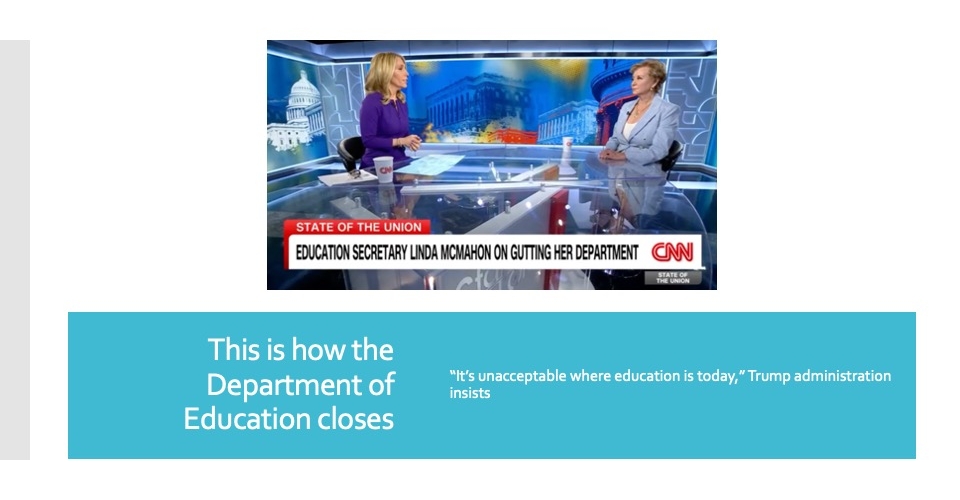The U.S. Department of Education is undergoing change like never before as part of the Trump Administration’s overall goal to cut federal spending across the board. To better understand this initiative, it’s important to know what the department is responsible for in terms of spending. Here’s a look at that data.
Overall spending
In fiscal year 2024 alone, the net cost to operate the department was more than $218 billion, according to an analysis from the Pew Research Center. Net outlays, a similar metric that incorporates certain accounting adjustments, totaled $267.9 billion that same year.
Those figures are significantly lower than FY2022 when the Biden administration expanded student loan forgiveness programs. During that period, net cost operations for 2022 reached nearly $600 billion, falling sharply in FY2023 after the courts struck down many of those initiatives.
In grants alone, the department’s spending totaled more than $150 billion in FY2024, according to its annual financial report. These major grant programs include:
- $18.8 billion for schools with large poor, neglected, delinquent and other “educationally disadvantaged” students.
- $15.5 billion for special education programs for students with disabilities.
- $5.5 billion for school improvement efforts, such as teacher quality initiatives, after-school programs and classroom technology.
- $3.8 billion for adult rehabilitation services.
- $2.2 billion for career, technical and adult education.
Pandemic relief funding also made up a large portion of FY2024’s spending. The department gave out $55 billion in COVID-19 grants to preK programs, elementary and secondary schools. Since 2020, it provided $186 billion in total, which has helped schools afford things like tutoring, learning loss prevention efforts, teacher training and recruitment, mental health services and efforts to bring students back to school after the pandemic.
The department also provided $260 million in 2024 through its research arm, the Institute of Education Sciences. However, President Donald Trump has already scrapped the $900 million in IES contracts, some of which cover multiple years.
More from DA: 3 education issues governors prioritized in their state addresses
Other metrics
Practically since its inception, the Department of Education has received backlash from conservatives who argue that education is better off controlled by the states. Trump, however, is the first to make deep changes to the agency in such a short amount of time.
Most recently, his Education Secretary Linda McMahon cut 50% of the department’s workforce, which is just the “first step” in overhauling the federal agency. It’s a decision that many Americans might actually be in favor of.
Only 44% of U.S. adults said they had a “favorable opinion” of the department, according to a 2024 Pew Research Center survey. Another 45% had an unfavorable opinion, placing the department near the bottom of the 16 federal agencies that Pew Research surveyed individuals about in terms of favorability.
Opinions toward the agency represent a partisan divide that has existed for decades. Nearly 60% of Republicans and Republican-leaning independents (64%) viewed the department unfavorably, while nearly the same share of Democrats and Democrat leaners (62%) favored the department.
District Administration has been covering the Trump Administration’s changes to the Department of Education extensively. You can read our full coverage here.



